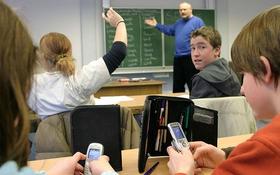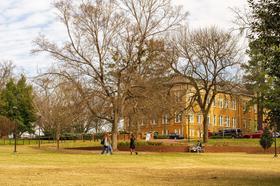Top Rankings
Nashoba School District ranks among the top 20% of public school district in Massachusetts for:
Category
Attribute
Overall Rank
Highest overall rank (Top 20%)
Math Proficiency
Highest math proficiency (Top 20%)
Reading/Language Arts Proficiency
Highest reading/language arts proficiency (Top 20%)
Science Proficiency
Highest science proficiency (Top 20%)
Graduation Rate
Highest graduation rate (Top 20%)
For the 2026 school year, there are 3 public preschools serving 1,704 students in Nashoba School District. This district's average pre testing ranking is 9/10, which is in the top 20% of public pre schools in Massachusetts.
Public Preschools in Nashoba School District have an average math proficiency score of 60% (versus the Massachusetts public pre school average of 36%), and reading proficiency score of 63% (versus the 37% statewide average).
Minority enrollment is 20% of the student body (majority Hispanic), which is less than the Massachusetts public preschool average of 53% (majority Hispanic).
Overview
This School District
This State (MA)
# Schools
6 Schools
565 Schools
# Students
3,031 Students
204,952 Students
# Teachers
247 Teachers
17,764 Teachers
Student-Teacher Ratio
12:1
12:1
Student By Grade
District Rank
Nashoba School District, which is ranked within the top 20% of all 393 school districts in Massachusetts (based off of combined math and reading proficiency testing data) for the 2022-2023 school year.
The school district's graduation rate of 95% has stayed relatively flat over five school years.
Overall District Rank
#56 out of 395 school districts
(Top 20%)
(Top 20%)
Math Test Scores (% Proficient)
61%
42%
Reading/Language Arts Test Scores (% Proficient)
64%
44%
Science Test Scores (% Proficient)
67%
44%
Graduation Rate
95%
90%
Students by Ethnicity:
Diversity Score
0.34
0.68
% American Indian
n/a
n/a
% Asian
4%
6%
% Hispanic
9%
30%
% Black
2%
12%
% White
80%
47%
% Hawaiian
n/a
n/a
% Two or more races
5%
5%
All Ethnic Groups
District Revenue and Spending
The revenue/student of $23,148 in this school district is less than the state median of $23,854. The school district revenue/student has grown by 8% over four school years.
The school district's spending/student of $22,610 is less than the state median of $24,611. The school district spending/student has grown by 9% over four school years.
Total Revenue
$70 MM
$21,850 MM
Spending
$69 MM
$22,544 MM
Revenue / Student
$23,148
$23,854
Spending / Student
$22,610
$24,611
Best Nashoba School District Public Preschools (2026)
School
(Math and Reading Proficiency)
(Math and Reading Proficiency)
Location
Quick Facts
Rank: #11.
Center School
(Math: 67% | Reading: 72%)
Rank:
Rank:
10/
Top 10%10
403 Great Rd
Stow, MA 01775
(978) 897-0290
Stow, MA 01775
(978) 897-0290
Gr: PK-5 | 500 students Student-teacher ratio: 12:1 Minority enrollment: 22%
Rank: #22.
Florence Sawyer School
(Math: 59% | Reading: 64%)
Rank:
Rank:
8/
Top 30%10
100 Mechanic Street
Bolton, MA 01740
(978) 779-2821
Bolton, MA 01740
(978) 779-2821
Gr: PK-8 | 743 students Student-teacher ratio: 14:1 Minority enrollment: 16%
Rank: #33.
Mary Rowlandson Elementary School
(Math: 55% | Reading: 52%)
Rank:
Rank:
7/
Top 50%10
103 Hollywood Drive
Lancaster, MA 01523
(978) 368-8482
Lancaster, MA 01523
(978) 368-8482
Gr: PK-5 | 461 students Student-teacher ratio: 12:1 Minority enrollment: 22%
Recent Articles

Public School Transportation & Commute Planning Guide
Learn how public school transportation and commute planning can help families prepare for the coming school year safely and efficiently.

New Public School Safety Protocols 2025–26 Guide
Learn how new public school safety protocols for 2025–26 affect students, parents, and schools nationwide.

How Technology Transforms Education in 2025
Explore how technology shapes learning today, with updated data, policy context, trends, and real-world implications for students, educators, and families.





